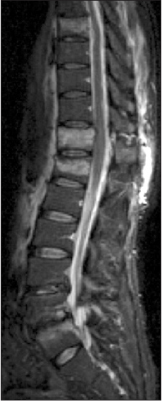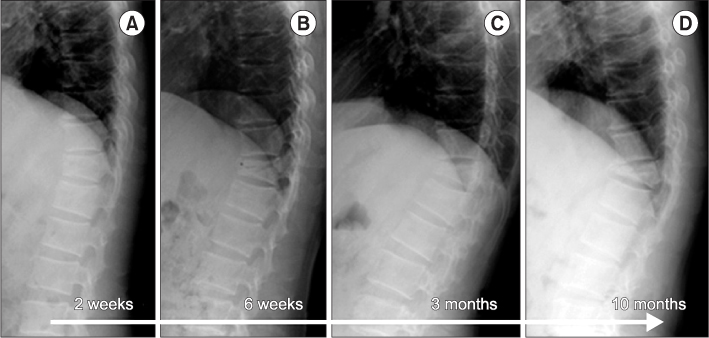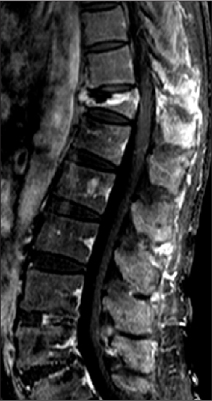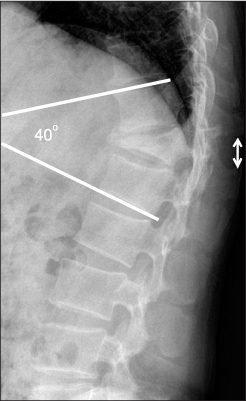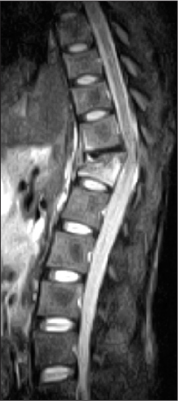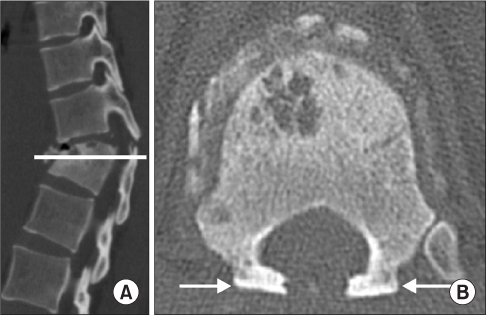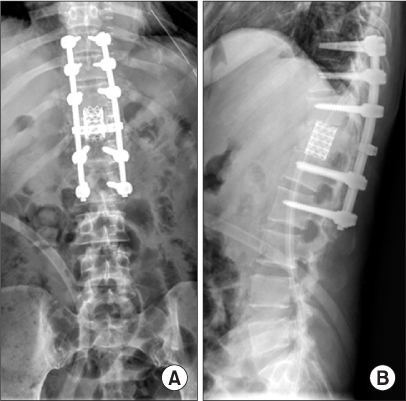J Korean Orthop Assoc.
2013 Aug;48(4):308-313.
The Fate of Neglected Three Column Injuries of the Thoracolumbar Spine
- Affiliations
-
- 1Department of Orthopaedic Surgery, Hanyang University College of Medicine, Seoul, Korea. cnkang65@hanyang.ac.kr
- 2Department of Orthopaedic Surgery, Sungae Hospital, Seoul, Korea.
Abstract
- In a thoracolumbar fracture, accurate diagnosis of spinal stability is necessary in deciding on appropriate treatment options and for prevention of complications that can subsequently occur. In various reports for spinal stability, rupture of the posterior ligament complex is generally accepted as a very important factor of spinal stabiliby. In cases of conservative treatment for unstable thoracolumbar fractures, the progressive kyphotic deformity can cause chronic pain and functional disability, and neurologic deterioration in severe cases. Therefore, the concept of surgical treatment for unstable thoracolumbar fracture has been well established. We report on two cases of neglected three column injury in the thoracolumbar spine, which were treated conservatively due to misdiagnosis at other hospitals, and finally underwent delayed operation in our hospital because of chronic back pain and progressive kyphotic deformity.
Figure
Reference
-
1. Nicoll EA. Fractures of the dorso-lumbar spine. J Bone Joint Surg Br. 1949; 31B:376–394.
Article2. Holdsworth F. Fractures, dislocations, and fracture-dislocations of the spine. J Bone Joint Surg Am. 1970; 52:1534–1551.
Article3. Denis F. The three column spine and its significance in the classification of acute thoracolumbar spinal injuries. Spine (Phila Pa 1976). 1983; 8:817–831.
Article4. McAfee PC, Yuan HA, Fredrickson BE, Lubicky JP. The value of computed tomography in thoracolumbar fractures. An analysis of one hundred consecutive cases and a new classification. J Bone Joint Surg Am. 1983; 65:461–473.
Article5. Vaccaro AR, Lehman RA Jr, Hurlbert RJ, et al. A new classification of thoracolumbar injuries: the importance of injury morphology, the integrity of the posterior ligamentous complex, and neurologic status. . Spine (Phila Pa 1976). 2005; 30:2325–2333.6. Vaccaro AR, Lee JY, Schweitzer KM Jr, et al. Assessment of injury to the posterior ligamentous complex in thoracolumbar spine trauma. Spine J. 2006; 6:524–528.
Article7. Daffner RH, Deeb ZL, Goldberg AL, Kandabarow A, Rothfus WE. The radiologic assessment of post-traumatic vertebral stability. Skeletal Radiol. 1990; 19:103–108.
Article8. Lee HM, Kim DJ, Kim HS, Suk KS, Kim NH, Park SY. Reliability of MRI to detect posterior ligament complex injury in thoracolumbar spinal fractures. J Korean Soc Spine Surg. 2000; 7:70–76.9. Pizones J, Izquierdo E, Alvarez P, et al. Impact of magnetic resonance imaging on decision making for thoracolumbar traumatic fracture diagnosis and treatment. Eur Spine J. 2011; 20:Suppl 3. 390–396.
Article
- Full Text Links
- Actions
-
Cited
- CITED
-
- Close
- Share
- Similar articles
-
- Mechanisms and Classifications of Thoracolumbar Fractures
- Neglected Thoraco Lumbar Traumatic Spine Injuries
- Distribution and Patterns of Posterior Column Injury in Flexion-Distraction Injuries of Thoracolumbar Spine
- Posterior Instrumentation of Thoracolumbar Fracture
- Image Study of the Thoracolumbar Spine Fracture


